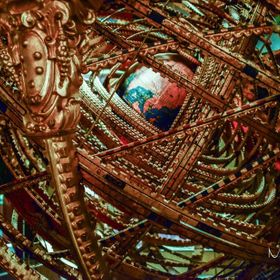

scottjones_8186
FollowViews
236
Likes
Awards
Member Selection Award
Peer Award
Superb Composition
Absolute Masterpiece
Top Choice
Outstanding Creativity
Magnificent Capture
Top Ranks
Categories
travlndon
October 02, 2016
Scott, welcome to ViewBug. An eye catching spray of blooms. Did you auto or manually focus this? Shooting manual focus although intimidating would allow you to focus on just one flower to increase eye time on the set. Did you play with saturation or were that deep into shadow?

scottjones_8186
October 02, 2016
It was manual focus; the lens I was using that day doesn't have auto focus. I can't remember if I tweaked the saturation or not...probably, but this location is inside of a volcanic crater, plus these plumeria trees get pretty big and bushy, and I was just shooting the blooms closer to the ground, so it was also likely in heavy shadow, as well.
Same photographer See allBehind The Lens
Discover more photos See all
Behind The Lens
Location
I took this photo at the Koko Head Botanical Garden on the island of Oahu in Hawaii. It is a beautiful spot, showcasing examples of tropical and temperate plants and flowers from around the world. One section of the garden is dedicated to plumeria, which is the plant in the photograph, and the park contains more than 25 different species exhibiting an amazing array of different colors. For any photographer visiting Oahu, I would consider it a "must see" spot. I lived on the island for almost three years before I ever made it there, but I've been back several times, since.Time
This photo was taken early in the day, as I had only intended to stop by the gardens briefly to check them out before going on to nearby Hanauma Bay to do some snorkeling. Once there, I spent almost two hours walking around and snapping pictures of the flowers, cacti, trees, insects, and animals in the park.Lighting
I'm pretty new to technical photography, so there was lot of trial and error to get the shot I wanted. It's all natural light, and the plant was in the shade, but the flowers were so naturally radiant I really didn't have to do much to make them pop out from their background. Plumeria really are amazing, and when you see them in person, they don't even look real...they look like someone painted them. In fact, I actually had this photo transferred to canvas, and it is hanging up in my living room. Guests often mistake it for a painting.Equipment
I took this shot with a Nikon D3300, I believe with a DX 18-55mm lens.Inspiration
As I said, plumeria are absolutely gorgeous flowers, and for a guy with a new camera, the botanical gardens provided ample beautiful subjects to photograph. This picture contrasts pretty starkly with some other shots I got that day...barrel cactus, birds, insects, and a stray cat that looked like he owned the place.Editing
If I recall, I believe the only post-processing I did on this shot was to crop it a bit and a slight tweak to the contrast to further darken the background.In my camera bag
The Nikon D3300 was the first DSLR camera I ever owned. I still take it out with me a lot, but I have since moved on to a D800E. They are totally different in configuration, but operate pretty similarly with regards to menus. I carry a tripod with me everywhere, even if I don't plan on using it, and lately I've been experimenting with neutral density filters to extend my exposure time (lots of picturesque sunrises and sunsets in Hawaii). It's not unusual for me to bounce out of bed at 4am and go out to a secluded spot to try to get some Milky Way shots, so I also always keep a headlamp in my bag. I've got a small array of Nikkor lenses I keep on hand, as well...18-55mm, 18-300mm, 50mm, and a14mm wide angle (great for night sky shots and landscapes).Feedback
LOL...to be honest, this shot was 90% luck. As a newbie, the best advice I can give is take lots of pictures and mix it up. Always shoot in manual, and give deliberate thought to what you're doing with exposure time, ISO, and aperture. Play with the settings to see the effects different changes have on the same shot. Don't worry about it too much when you're out shooting, but later, when you get home and download your shots, browse through them with the photo info visible. That will give you a pretty good idea what kind of picture you'll get with certain settings. Also, that is something I really love about ViewBug, and something that has really helped me out as I learn. Most of the shots you see in ViewBug also provide information on the camera, lens, and settings the photographer was using at the time of the shot. When I see a shot I really like, I make a note of the settings used, and I try to recreate the photo on a similar piece of terrain. Imitation is the purest form of flattery, right?











































